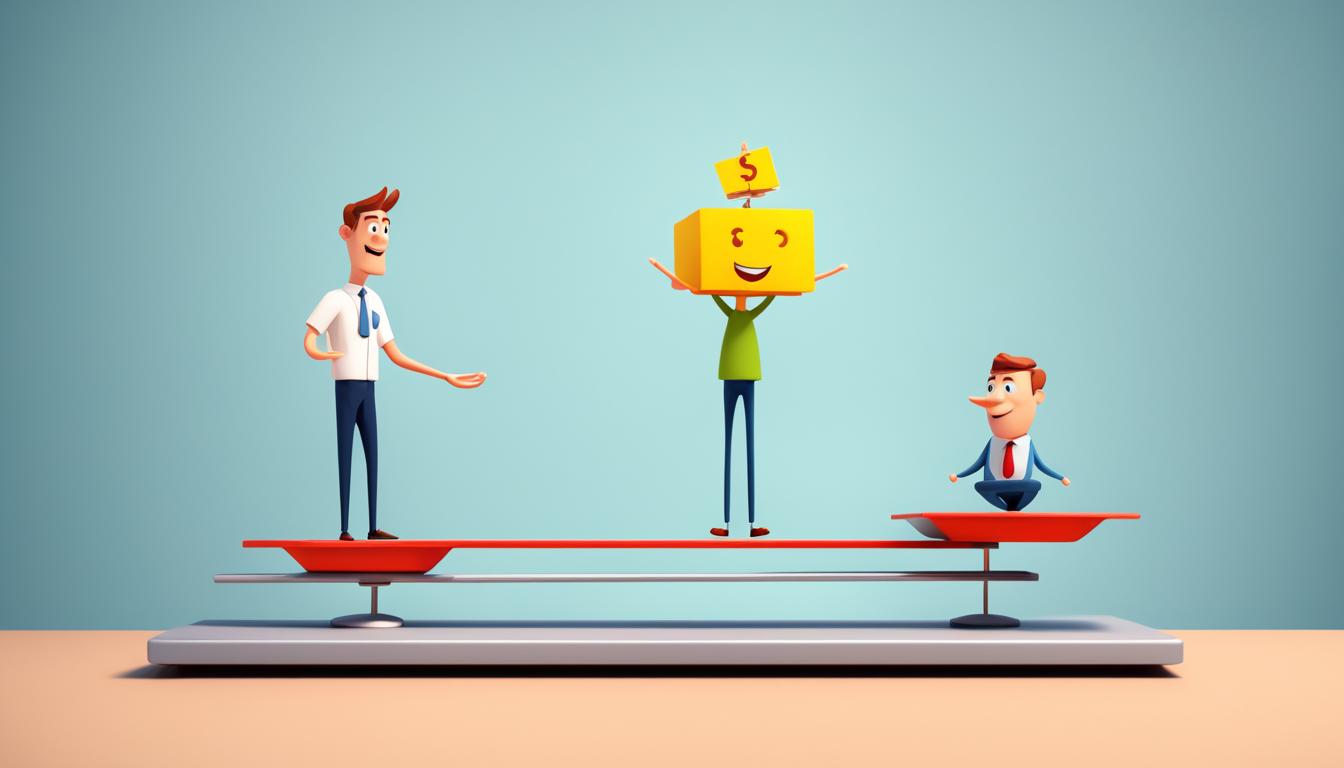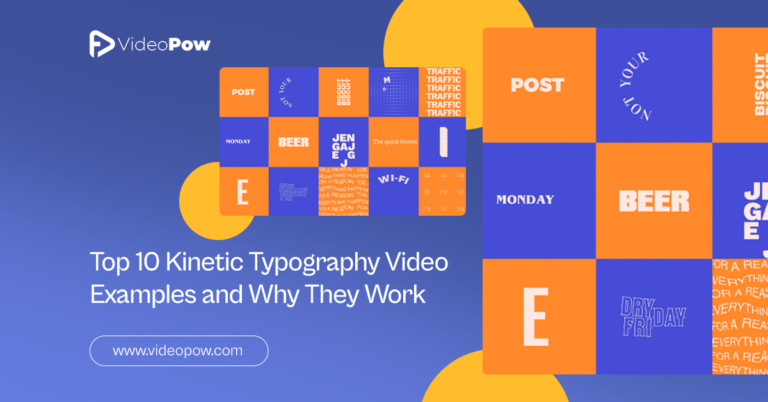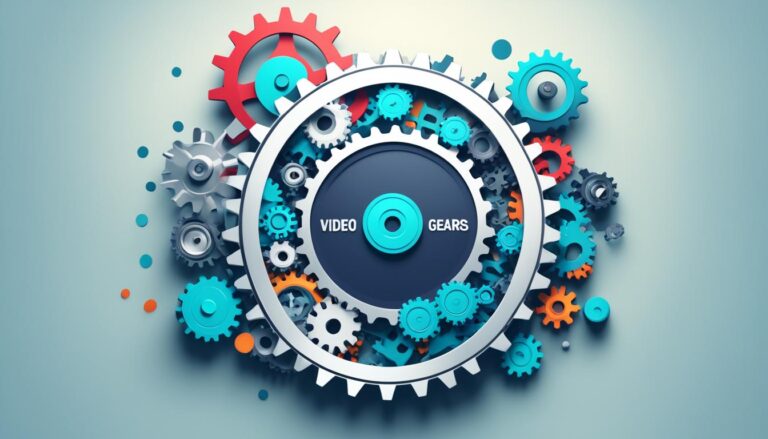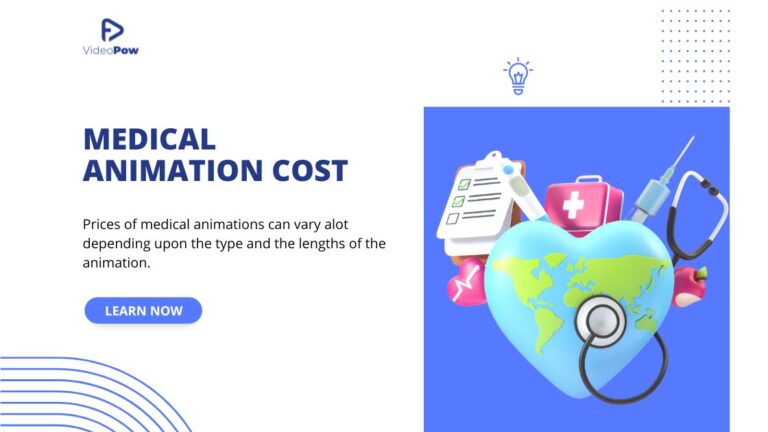Did you know that animation can cost anywhere from a few hundred dollars to thousands of dollars per minute? The price tag attached to professional animation projects can be surprising, but it’s crucial to understand the factors that influence these costs and how to budget effectively for your animation needs.
Key Takeaways:
- Animation costs can vary greatly depending on factors such as animation style, video length, customization requirements, and hidden costs.
- Different animation styles, including 2D animation, 3D animation, and motion graphics, come with their own cost ranges.
- Video length plays a significant role in animation pricing, with longer videos typically resulting in higher costs.
- Customization in animation, such as custom characters and original music, can add to the overall cost of a project.
- Hidden costs, including revisions and stock assets, should be carefully considered to avoid unexpected budget constraints.
Understanding Animation Cost Factors
In order to accurately budget for an animation project, it’s important to understand the various factors that contribute to animation costs. These factors can play a significant role in determining the price of your animation, and being aware of them can help you make informed decisions when planning your budget. Here are the key animation cost factors to consider:
Animation Style
The animation style you choose for your project can have a huge impact on the cost. Different animation styles require varying levels of expertise and resources, which can affect the overall price. For example, 3D animation tends to be more expensive than 2D animation due to the complexity and additional skill set involved. Motion graphics, on the other hand, may fall somewhere in between. It’s essential to choose an animation style that aligns with your project goals and budget restrictions.
Length of the Video
The duration of your animation video is another crucial factor influencing its cost. Longer videos typically require more time and effort to produce, which can increase the overall price. In general, the cost per minute tends to decrease as the video length increases, thanks to economies of scale. However, it’s important to remember that longer videos may also require additional resources, such as more complex visuals or extended script development, which can impact the final cost.
Customization Requirements
If you have specific customization requirements for your animation, such as unique characters, detailed backgrounds, or personalized branding, it can significantly impact the cost. Customization often involves additional time and skill to create the desired elements, resulting in higher expenses. While customization adds value and uniqueness to your animation, it’s essential to balance your customization needs with your budget limitations.
Hidden Costs to Watch Out For
In addition to the obvious cost factors, there are hidden costs in animation projects that are often overlooked. These can include revisions, project management, and the use of stock assets. Revisions can extend the production timeline and incur extra charges if they are requested after a certain point in the process. Efficient project management ensures a smooth workflow, but it comes with its own costs. Lastly, using stock assets or music can save you money, but some assets may have licensing fees or limitations on usage.
By taking these animation cost factors into consideration, you can create a more accurate budget for your project. Understanding the impact of animation style, video length, customization requirements, and hidden costs will help you make informed decisions and prioritize your spending.
Stay tuned for the next section where we break down the cost ranges for different animation styles, providing you with a comprehensive understanding of animation pricing.
Cost Ranges for Different Animation Styles
When it comes to animation, different styles can significantly impact the cost of a project. Factors such as the level of detail, complexity, and motion fluidity play a crucial role in determining the price range within each animation style. Let’s explore the cost ranges for three popular animation styles: 2D animation, 3D animation, and motion graphics.
2D Animation
2D animation is a classic style that involves creating movement in a two-dimensional space. This style is commonly used in cartoons, explainer videos, and advertisements. The cost of 2D animation can vary depending on the level of detail and complexity required. Simple 2D animations with minimal backgrounds and characters typically fall in the lower end of the cost range, while more intricate animations with complex movement and detailed backgrounds can be more expensive.
3D Animation
3D animation brings characters, objects, and scenes to life in a three-dimensional space. It is widely used in movies, video games, and architectural visualizations. The cost of 3D animation is usually higher than 2D animation due to the additional time and skill required to create realistic 3D models, textures, and complex movements. Highly detailed and visually stunning 3D animations can be on the higher end of the cost range.
Motion Graphics
Motion graphics combine elements of design, animation, and typography to create visually appealing and informative videos. This style is popular in corporate videos, title sequences, and promotional content. The cost of motion graphics animation can vary based on the complexity of the motion graphics elements, visual effects, and the level of detail required. Simpler motion graphics with minimal effects and straightforward animations generally fall within the lower end of the cost range.
Here’s a table summarizing the cost ranges for different animation styles:
| Animation Style | Cost Range |
|---|---|
| 2D Animation | $$ – $$$ |
| 3D Animation | $$$ – $$$$ |
| Motion Graphics | $$ – $$$ |
Keep in mind that these cost ranges are general estimates and can vary depending on the specific project scope, animation studio rates, and other factors. It’s recommended to consult with animation professionals to get accurate cost estimates for your unique requirements.
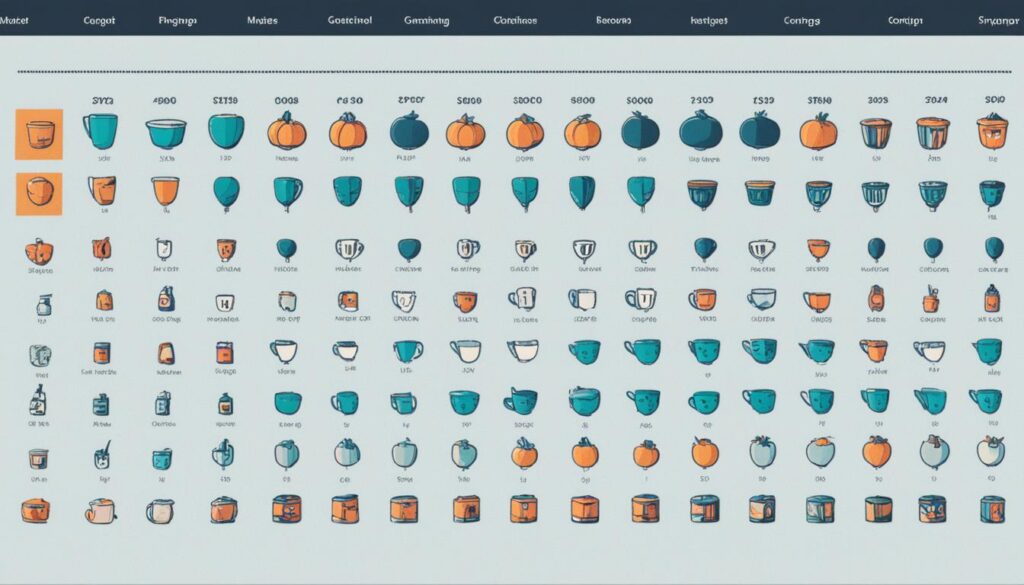
Pricing Based on Video Length
When it comes to animation pricing, video length plays a crucial role in determining the overall cost of your project. Longer videos typically require more time, resources, and effort, resulting in higher animation costs. Understanding the relationship between video length and animation pricing is essential for effective budgeting.
On average, animation studios charge on a per-minute basis for their services. The cost per minute can vary depending on factors such as the animation style, complexity, and customization requirements. Below is a breakdown of the average cost per minute for different video durations:
| Video Duration | Average Cost Per Minute |
|---|---|
| 30 seconds | $1,000 – $5,000 |
| 1 minute | $2,000 – $10,000 |
| 2 minutes | $4,000 – $20,000 |
| 3 minutes | $6,000 – $30,000 |
Please note that these cost ranges are just estimations and can vary depending on numerous factors. Animation studios may have their own pricing structures, so it’s always a good idea to request quotes from different studios to compare prices and find the best fit for your project.
It’s important to consider the economies of scale when it comes to longer animations. As the video length increases, the cost per minute tends to decrease. This is because animation studios can reuse assets, character rigs, and animations, resulting in time and cost savings. However, complex scenes or unique customizations may still increase the overall cost, even for longer videos.
Keep in mind that video length is just one aspect of animation pricing. Other factors such as animation style, customization requirements, and the level of detail can also contribute to the final cost of your project. By understanding these factors and their impact on pricing, you can make informed decisions and effectively budget for your animation needs.
Customization Costs in Animation
When it comes to animation projects, customization can add an extra layer of creativity and personalization. However, it’s important to consider the associated costs in order to plan your budget effectively. In this section, we will delve into the various customization costs in animation and provide insights on how to manage them.
Custom Characters/Elements
Creating custom characters or elements is a common way to make your animation unique. However, this level of customization often comes with additional costs. Custom characters require concept art, design iterations, and rigging, which can increase the overall production time and cost. Similarly, designing custom background elements or props entails extra effort.
Complex Scene Builds
If your animation project involves intricate and detailed scenes, the complexity of the scene builds can impact both the time and cost. Complex scenes may require meticulous set design, multiple layers, and intricate animations, which all contribute to the customization costs.
Original Music
One way to enhance the impact of your animation is through original music compositions. Hiring a composer or licensing original music can elevate the emotional appeal of your animation. However, it’s important to allocate a portion of your budget for original music to ensure quality and legal compliance.
Voice Actors
Employing voice actors for your animation project can bring your characters to life and add a professional touch. However, the cost of hiring voice actors varies depending on their experience, reputation, and role complexity. Budgeting for voice actors is crucial to ensure that you achieve the desired level of customization in your animations.
By understanding and accounting for these customization costs, you can plan your animation project more effectively and avoid any budgetary surprises.
| Customization Expense | Average Cost Range |
|---|---|
| Custom Characters/Elements (per item) | $500 – $2,000 |
| Complex Scene Builds | $1,000 – $5,000 |
| Original Music | $1,000 – $10,000 |
| Voice Actors (per character) | $200 – $2,000 |
These cost ranges can provide a general idea, but keep in mind that actual prices may vary depending on the complexity and scale of your project, as well as the creative professionals you choose to work with.
Hidden Costs to Watch For
When budgeting for animation projects, it’s essential to consider the hidden costs that can often catch you off guard. These costs are often overlooked but can significantly impact your animation budget. By being aware of these potential expenses, you can avoid unexpected budget constraints and ensure a smooth production process.
1. Revisions
Revisions are a crucial part of any animation project. While they allow you to refine and perfect your animation, they can also add to the overall cost. It’s essential to account for revision rounds in your budget, as multiple revisions can increase the project timeline and require additional resources.
2. Project Management
Managing an animation project involves coordinating various elements, such as scriptwriting, storyboarding, voice acting, and animation production. While it’s easy to overlook project management as an additional cost, it plays a vital role in ensuring a smooth workflow and high-quality output. Consider allocating a portion of your budget to project management to ensure efficient coordination and timely delivery of your animation.
3. Stock Assets
Using stock assets, such as background images, sound effects, or music tracks, can enhance your animation and save time during the production process. However, it’s important to remember that some stock assets may come at a cost. Depending on your project’s requirements, you may need to allocate a part of your budget to purchase premium stock assets that align with your vision and enhance the overall quality of your animation.
“Hidden costs in animation projects can quickly add up, impacting your budget and timeline. Being proactive in identifying and accounting for these costs can help you plan more effectively and avoid any unpleasant surprises.”
To summarize, understanding the hidden costs of animation projects is crucial for effective budgeting. Revisions, project management, and stock assets are some of the key areas where hidden costs can arise. By accounting for these expenses in your budget, you can ensure a smoother production process and deliver a high-quality animation without compromising your financial constraints.
| Hidden Costs to Watch For | Budget Impact |
|---|---|
| Revisions | Additional expenses and prolonged project timeline |
| Project Management | Efficient coordination and timely delivery |
| Stock Assets | Enhanced animation quality and aligned vision |

Animation Timelines and Budgets
In the world of animation, timelines play a crucial role in determining the overall budget of a project. Understanding the relationship between animation timelines and budgets is essential for proper project planning and cost management. In this section, we will explore the impact of animation timelines on budgets and provide insights into how to plan and allocate resources effectively.
Typical Animation Timelines
Animation timelines can vary significantly depending on the complexity and length of the project. Shorter animations, such as advertisements or explainer videos, usually have faster turnaround times and can be completed within a few weeks. On the other hand, longer animations, such as animated feature films or TV series, can take months or even years to complete.
It’s important to note that rushing through an animation project to meet tight deadlines can have a significant impact on the budget. Rushed projects often require additional resources, such as more animators or extended work hours, which can result in higher costs. Therefore, allowing sufficient lead time for the animation process is crucial to avoid budget overruns.
The Budget Impact
The timeline of an animation project directly affects the budget in several ways. First, longer timelines generally require more resources and manpower, leading to increased labor costs. This is especially true in projects that involve complex animation styles or intricate details.
Second, rushed timelines can result in mistakes and errors, leading to the need for revisions and rework. These additional iterations contribute to increased costs, both in terms of time and money. Allocating ample time for revisions and quality control can help minimize these expenses.
| Animation Timeline | Budget Impact |
|---|---|
| Extended timeline | Higher labor costs, increased resources |
| Rushed timeline | Inefficient workflow, increased revisions |
By carefully managing animation timelines and allowing appropriate lead time, businesses can ensure a smoother workflow, minimize errors, and control costs. Proper planning and coordination with the animation team are crucial for achieving high-quality results within the allocated budget.
An example of animation timeline and budget management can be seen in the success of DreamWorks Animation, which meticulously plans its production schedules to optimize resources and deliver projects on time and within budget.
In the next section, we will explore strategies to save on animation costs without compromising quality, helping businesses make the most of their budgets and achieve their desired animation outcomes.
Saving on Animation Costs
When it comes to animation projects, finding ways to save on costs without compromising quality is crucial. Here are some cost-cutting strategies that can help you stay within your budget:
1. Use Pre-Made Assets
Utilizing pre-made assets such as stock animations, backgrounds, and characters can significantly reduce production costs. These assets are readily available and can be easily integrated into your animation, saving you time and money.
2. Reuse and Recycle Animations
Instead of starting from scratch for each project, consider repurposing existing animations. By reusing and recycling animations, you can save both time and resources. This approach works particularly well for recurring elements or motion graphics used in multiple videos.
3. Handle Voiceovers In-House
Hiring external voiceover talent can add up in terms of expenses. To cut costs, consider handling voiceovers in-house. If you have someone on your team with a suitable voice or can find affordable talent locally, you can save on voiceover expenses.
4. Scale Back on Revisions
While revisions are an essential part of the animation process, excessive revisions can drive up costs. Streamlining the revision process and keeping them to a minimum can help you save both time and money. Clear communication and a well-defined scope from the beginning can minimize the need for extensive revisions.
5. Simplify Animation Styles
Highly intricate and complex animation styles can be beautiful but also costly. Simplifying animation styles can help reduce the production time and costs involved. By opting for a more straightforward and minimalistic approach, you can still achieve visually appealing results while saving on animation costs.
By implementing these cost-saving strategies, you can effectively manage your animation budget and allocate resources where they matter most. Remember, it’s all about finding the right balance between quality and cost-efficiency.
Summary:
Animation projects can be expensive, but there are numerous ways to save on costs without sacrificing quality. Using pre-made assets, reusing animations, handling voiceovers in-house, scaling back on revisions, and simplifying animation styles are all effective cost-cutting strategies. By applying these strategies, you can keep your animation budget in check while still delivering impactful and visually stunning animations.
Conclusion
After considering the various factors involved in animation pricing, it is evident that budgeting for a professional animation project requires careful consideration. From understanding the cost factors to choosing the right animation style and video length, every decision impacts the final price. However, a budget-friendly animation is not impossible to achieve.
By following the guidelines outlined in this animation pricing guide, you can make informed decisions to optimize your budget while still achieving high-quality animations. It is crucial to find the right animation partner who understands your budget limitations and can offer tailor-made solutions without compromising on creativity and excellence.
Choosing the right animation partner is the key to successful and cost-effective projects. VideoPow, a leading animation studio, has years of experience in delivering budget-friendly animations that meet client expectations. Whether you need 2D animation, 3D animation, or motion graphics, VideoPow brings your ideas to life within your budget constraints. Contact VideoPow today for a personalized consultation and turn your vision into reality.
FAQ
What are the main costs involved in animation projects?
The main costs involved in animation projects include animation style, video length, customization requirements, and hidden costs.
What factors should I consider when budgeting for an animation project?
When budgeting for an animation project, you should consider the animation style, video length, customization requirements, and hidden costs.
How do different animation styles affect the cost?
Different animation styles can vary in cost depending on factors such as level of detail, complexity, and motion fluidity.
How does video length impact animation costs?
Video length can impact animation costs, with longer videos typically resulting in higher costs due to the increased production time.
What additional costs are associated with customization in animation projects?
Additional costs associated with customization in animation projects include custom characters/elements, complex scene builds, original music, and voice actors.
What hidden costs should I watch out for in animation projects?
Hidden costs in animation projects may include revisions, project management, and stock assets, which can add to the overall budget.
How do animation timelines affect budgets?
Animation timelines can impact budgets, as rushed projects may require additional resources and result in higher costs. Allowing proper lead time can help avoid budget constraints.
Are there any cost-saving strategies for animation projects?
Yes, there are several cost-saving strategies for animation projects, including using pre-made assets, reusing/recycling animations, handling voiceovers in-house, scaling back on revisions, and simplifying animation styles.

